Sorted by date Results 61 - 85 of 263

"Open and Avowed Rebellion": King George III's August 1775 Proclamation and the Turning Point in Anglo-American Relations On August 23, 1775, King George III issued a formal proclamation declaring that the American colonies were in a state of "open and avowed rebellion." This moment marked a decisive shift in British imperial policy and irrevocably altered the trajectory of the American Revolution. What had begun as a series of colonial protests and petitions for redress now stood officially...

On August 24, 410 CE, the unthinkable happened. The city of Rome-once the heart of the mighty Roman Empire, a symbol of civilization and power-was breached and pillaged by the Visigoths under the command of their formidable king, Alaric I. For three days, the Eternal City was consumed by chaos, marking a watershed moment in the decline of the Western Roman Empire and shaking the foundations of the ancient world. The Rise of Alaric and the Visigoths The Visigoths were a branch of the larger...

On August 25, 1991, the Croatian city of Vukovar became the epicenter of one of the most brutal urban battles in post–World War II Europe. What followed was an 87-day siege by the Yugoslav People's Army (JNA), backed by Serbian paramilitary forces, that would leave the city in ruins and mark a turning point in the Croatian War of Independence. A City on the Brink Before the war, Vukovar was a prosperous, multiethnic town nestled along the Danube River in eastern Croatia. Croats, Serbs, H...

In the annals of American artillery, few systems evoke the raw power and battlefield presence of the M110 self-propelled howitzer. Armed with a 203 mm (8-inch) gun, the M110 was the largest caliber mobile artillery piece in the U.S. arsenal during the Cold War. Though retired from service decades ago, its legacy lives on-not just in museums and veteran recollections, but on the battlefields of Ukraine, where similar Soviet-era systems continue to shape the contours of modern warfare. Origins...

The Dawn of Strategic Nuclear Airpower On August 8, 1946, the Convair B-36 Peacemaker took to the skies for the first time, marking a pivotal moment in Cold War aviation history. Designed during World War II but completed in its aftermath, the B-36 was the world's first mass-produced aircraft capable of delivering nuclear weapons across intercontinental distances-without refueling. Origins and Design • Manufacturer: Consolidated Vultee Aircraft Corporation (Convair) • Purpose: Strategic bom...

On August 10, 1792, the French Revolution reached a violent crescendo as thousands of armed revolutionaries stormed the Tuileries Palace in Paris, the official residence of King Louis XVI. The massacre of the Swiss Guards, the arrest of the royal family, and the collapse of the monarchy marked a turning point that plunged France into its most radical and blood-soaked phase: the Reign of Terror. The Insurrection of August 10: Collapse of the Monarchy Tensions between the monarchy and...

On Monday, August 11 the Catholic Diocese of Birmingham held their Annual Memorial Mass and Reception to honor the life of Father James E. Coyle. The 104th Memorial Mass is held each year at the Cathedral of Saint Paul in Birmingham, Alabama. The 104th Memorial Mass was celebrated by Bishop Steven J. Raica. Father Coyle was murdered in broad daylight in Birmingham by a Ku Klux Klan member on August 11, 1921. The KKK was then at the ascendancy of their power in Alabama, so they hired famed...

In the waning days of The War Between The States that occurred from 1861 through 1865, it became evident that after four years of fighting with fewer resources and fewer soldiers, that The South was crippled to its knees and a surrender was imminent. Nevertheless, a mere five days before General Robert E. Lee's surrender at Appomattox, General John T. Croxton led union troops in completing their march to The University of Alabama and burning it to the ground. Only four buildings were spared,...
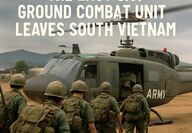
🇺🇸 On August 11, 1972, the United States formally ended its ground combat operations in South Vietnam with the departure of the 3rd Battalion, 21st Infantry-nicknamed "The Gimlets"-from Da Nang. This moment marked a pivotal shift in the Vietnam War, signaling the beginning of the end of direct American military involvement in Southeast Asia. The Final Withdrawal The 3rd Battalion had been stationed at Da Nang, providing security for the U.S. air base and surrounding military insta...

On August 9, 1945, the Japanese city of Nagasaki was devastated by the second atomic bomb ever used in warfare. Dropped just three days after the bombing of Hiroshima, the plutonium-based "Fat Man" bomb instantly killed tens of thousands and left a legacy of suffering, resilience, and global reckoning. As the world marks the 80th anniversary of this event, the story of Nagasaki remains a powerful reminder of the human cost of nuclear warfare and the enduring call for peace. The Mission and the...

On August 8, 1647, English Parliamentary forces under Colonel Michael Jones decisively defeated the Irish Confederate Leinster army led by General Thomas Preston at Dungan's Hill in County Meath. The battle was a turning point in the Irish Confederate Wars, effectively crippling the Confederate military presence in eastern Ireland and paving the way for the Cromwellian conquest. Strategic Context • Wars of the Three Kingdoms: A series of interconnected conflicts in England, Scotland, and I...
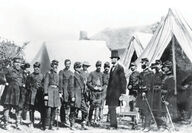
Lincoln claimed the North was fighting to preserve the Union. However, fighting to preserve a voluntary Union is a contradiction since force is antithetical to voluntary consent. Alexander Hamilton noted: “To coerce the States is one of the maddest projects that was ever devised…Can any reasonable man be well disposed toward a government which makes war and carnage the only means of supporting itself; a government that can exist only by the sword?” The New England power structure did just that....

If you don’t know the answer to this question, or even if you had to think about it for awhile, you’ve proven my point: The Korean War (June 1950 – July 1953) is America’s forgotten conflict. Of all the memorials on the Washington Mall, the Korean War Memorial is my favorite. In graphic detail, larger than life, it depicts in stainless steel 19 gaunt American soldiers in full battle dress as they grimly ascend a hill to commence an attack. Instead of being bunched together, they are spaced...
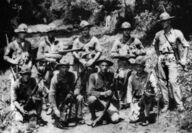
On August 14, 1912, United States Marines landed in Nicaragua, marking the beginning of a prolonged military occupation that would last, in various forms, until 1933. The intervention was part of a broader series of U.S. military actions in Latin America known as the Banana Wars, aimed at securing American political and commercial interests in the region. Background: Zelaya's Fall and U.S. Influence The roots of the invasion trace back to José Santos Zelaya, Nicaragua's Liberal president from...

On August 15, 778, deep in the Pyrenees between modern-day France and Spain, a Frankish rearguard led by the noble Roland met its end in a narrow mountain pass. The Battle of Roncevaux Pass, though a tactical defeat for Charlemagne's forces, became one of the most mythologized events in medieval European history-immortalized in epic poetry and shaping the ideals of chivalry for centuries to come. Charlemagne's Ambitions in Iberia The battle occurred during Charlemagne's campaign into the Iberian...

On August 16, 1841, President John Tyler stunned his own party and the nation by vetoing a bill to re-establish the Second Bank of the United States. The fallout was immediate and explosive. Within days, enraged members of the Whig Party gathered outside the White House in what became the most violent protest ever held on its grounds - firing guns, hurling stones, and burning Tyler in effigy. The riot marked a turning point in Tyler's presidency and exposed deep fractures within the Whig Party,...

On August 16, 1780, the quiet crossroads town of Camden, South Carolina became the site of one of the most devastating defeats for the Continental Army during the American Revolutionary War. The Battle of Camden was not merely a clash of arms-it was a collision of leadership styles, tactical misjudgments, and the brutal realities of 18th-century warfare. At the heart of the disaster were the officers whose decisions and valor shaped the outcome. Strategic Context: The Southern Campaign...
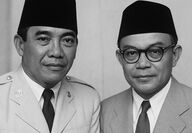
On August 17, 1945, in a modest house in Jakarta, two men-Sukarno and Mohammad Hatta-stood before a small crowd and read a brief but seismic declaration: "We, the people of Indonesia, hereby declare the independence of Indonesia." With that statement, the archipelago's centuries-long subjugation under foreign powers-from Portuguese traders to Dutch colonizers-was formally rejected. But the proclamation was not the end of struggle; it was the beginning of a bloody, four-year revolution against...
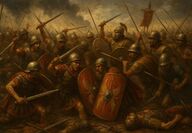
In the scorching heat of an Apulian summer in 216 BC, the course of military history was forever altered when the Carthaginian general Hannibal Barca annihilated a vastly larger Roman force in the Battle of Cannae, one of the most studied engagements in tactical warfare. Fought during the Second Punic War between Carthage and Rome, Cannae demonstrated both the brilliance of strategic envelopment and the vulnerability of rigid command structures in the face of innovation. At the time, Hannibal...
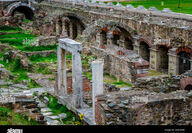
On July 31, 904, the Byzantine city of Thessalonica-second only to Constantinople in wealth and prestige-was engulfed in one of the most devastating assaults of the Arab–Byzantine Wars. Led by the renegade Greek convert to Islam, Leo of Tripoli, a fleet of 54 Saracen ships descended upon the city with brutal efficiency, leaving behind a trail of destruction, death, and despair. Thessalonica, a cosmopolitan hub with a deep harbor and fertile hinterlands, had long enjoyed peace and prosperity. B...

On July 22, 1298, the fields outside the Scottish town of Falkirk bore witness to one of the most significant-and devastating-clashes of the Wars of Scottish Independence. The Battle of Falkirk saw English King Edward I, the formidable "Hammer of the Scots," lead his archers and cavalry against the determined but outmatched forces commanded by the Scottish Guardian, Sir William Wallace. The encounter, marked most notably by the lethal effectiveness of the English longbowmen against the...

On August 1, 30 BC, Octavian-soon to be known as Augustus, Rome's first emperor-entered the ancient city of Alexandria, Egypt, marking a decisive moment in world history. This event not only sealed the fate of Mark Antony and Cleopatra, but also signaled the end of the Roman Republic and the beginning of the Roman Empire. The annexation of Egypt transformed Rome's geopolitical landscape and ushered in a new era of imperial rule. Prelude to Conquest: The Road to Alexandria The capture of...

On August 2, 1990, the international community awoke to alarming news: Iraqi President Saddam Hussein had ordered a full-scale invasion of neighboring Kuwait. The swift military operation stunned observers worldwide, rapidly morphing from a border dispute into a global crisis. The consequences would reverberate for decades, as the Gulf War marked a decisive moment in the reshaping of Middle Eastern power dynamics and U.S. foreign policy engagement. Backdrop of Tension Iraq's invasion wasn't...

Introduction On July 24, 1411, the lush fields near Inverurie in Aberdeenshire turned into one of the bloodiest battlegrounds in Scottish medieval history. The Battle of Harlaw was more than a violent regional skirmish-it was a decisive moment that shaped the political future of the Scottish Highlands and Lowlands. Historical Context The conflict stemmed from a contested inheritance. The Lordship of the Isles, a semi-autonomous Gaelic-Norse domain in western Scotland, was ruled by Donald of...

PETERSBURG, Va. - In one of the Civil War's most audacious and tragic episodes, Union forces detonated a massive underground mine beneath Confederate lines at Petersburg on July 30, 1864, hoping to break the stalemate of trench warfare and seize the strategic rail hub. The resulting explosion created a gaping crater and momentarily stunned Confederate defenders - but poor planning and leadership turned the opportunity into a devastating Union defeat. The Plan: Mining Under the Enemy The idea...